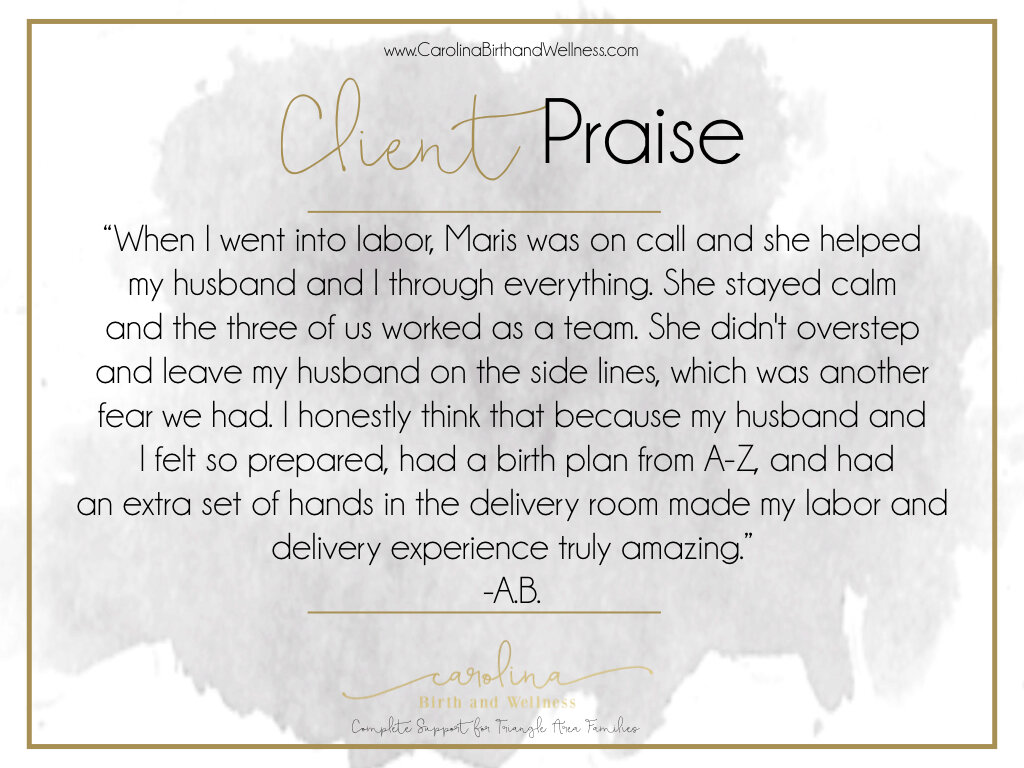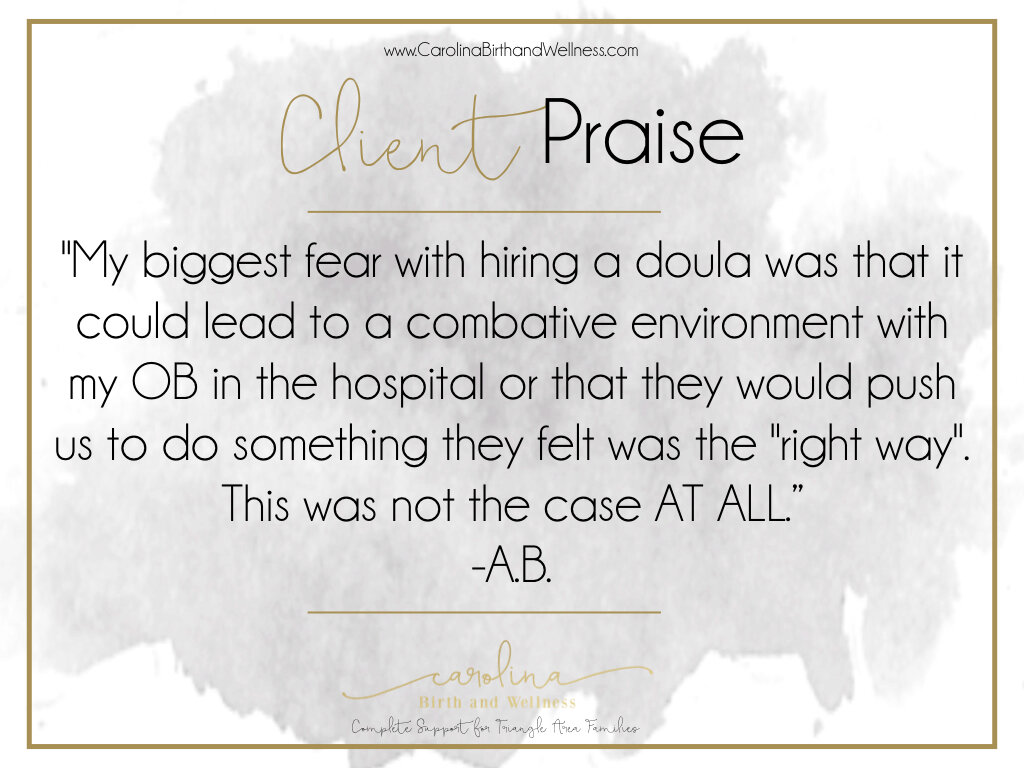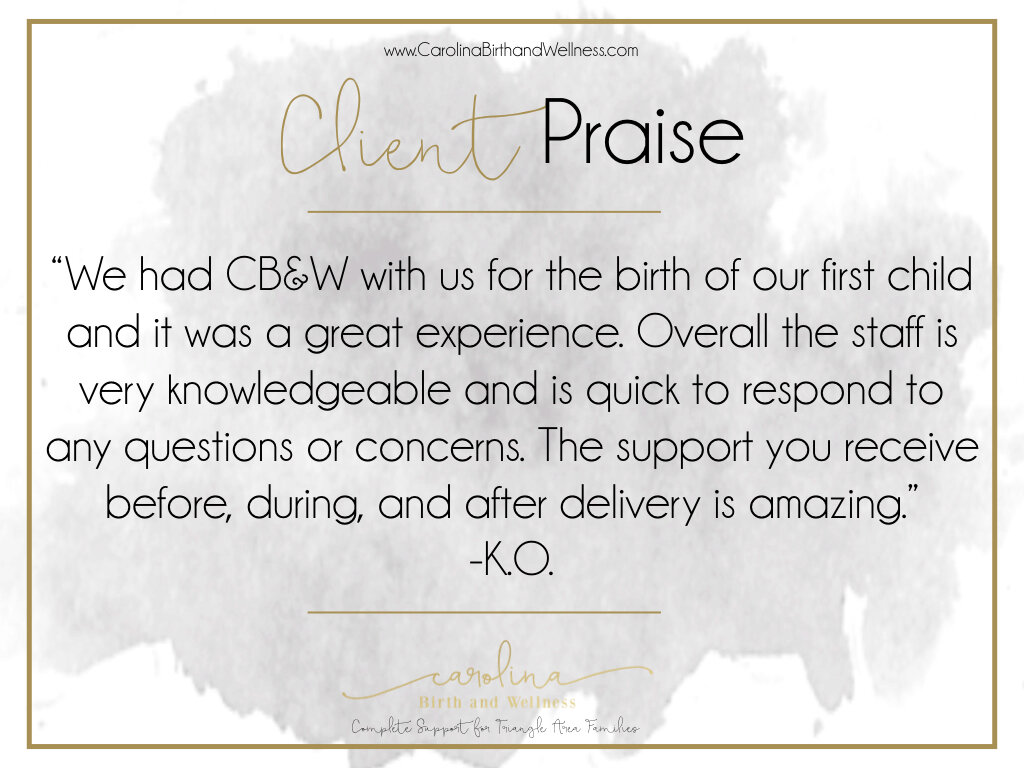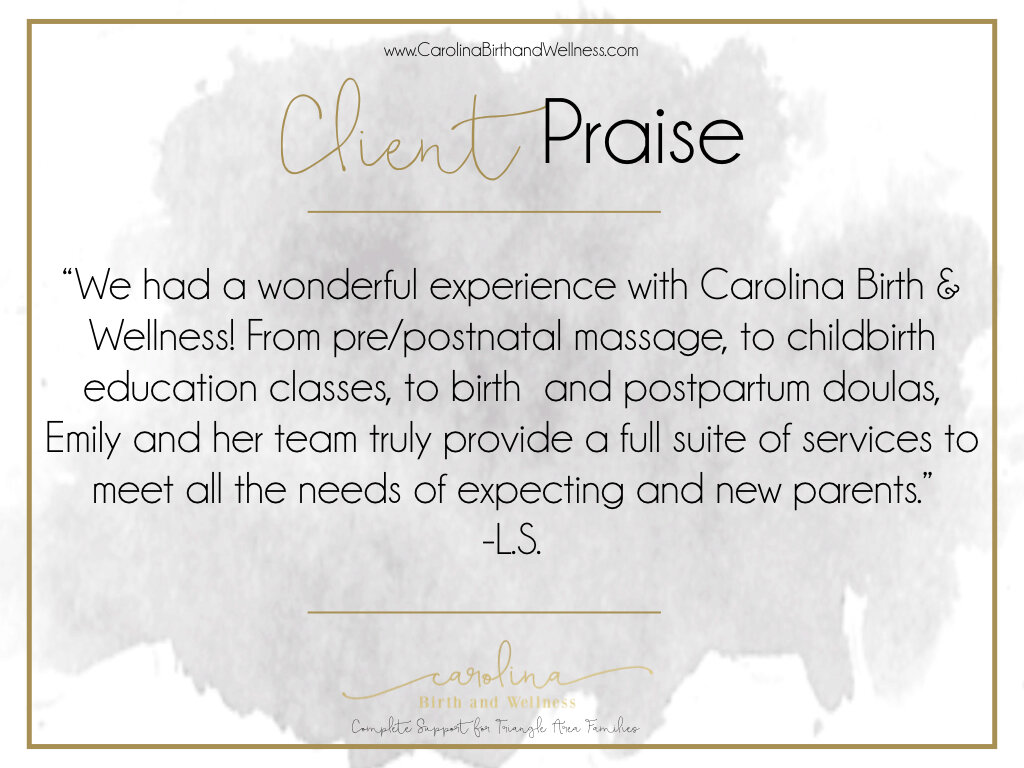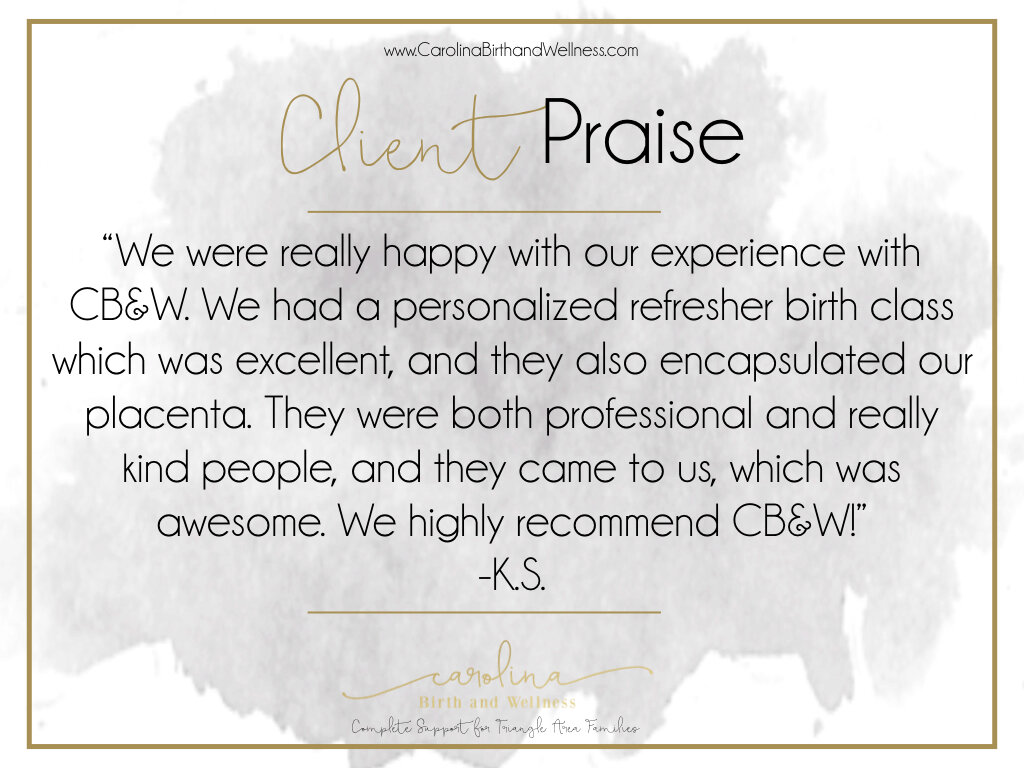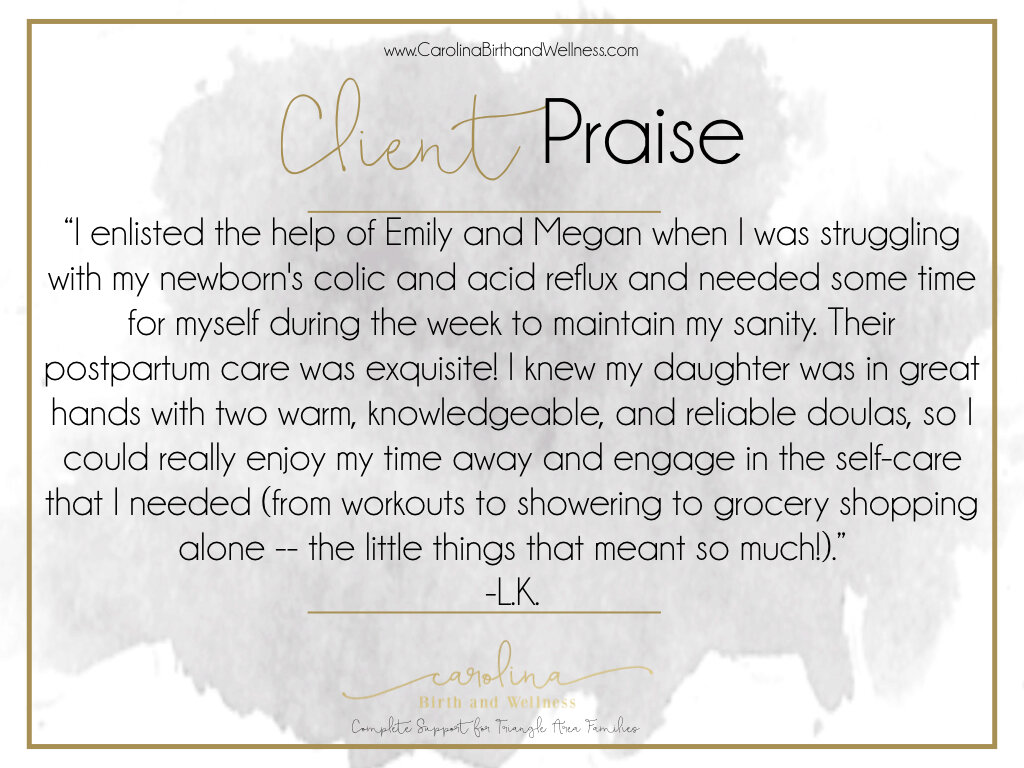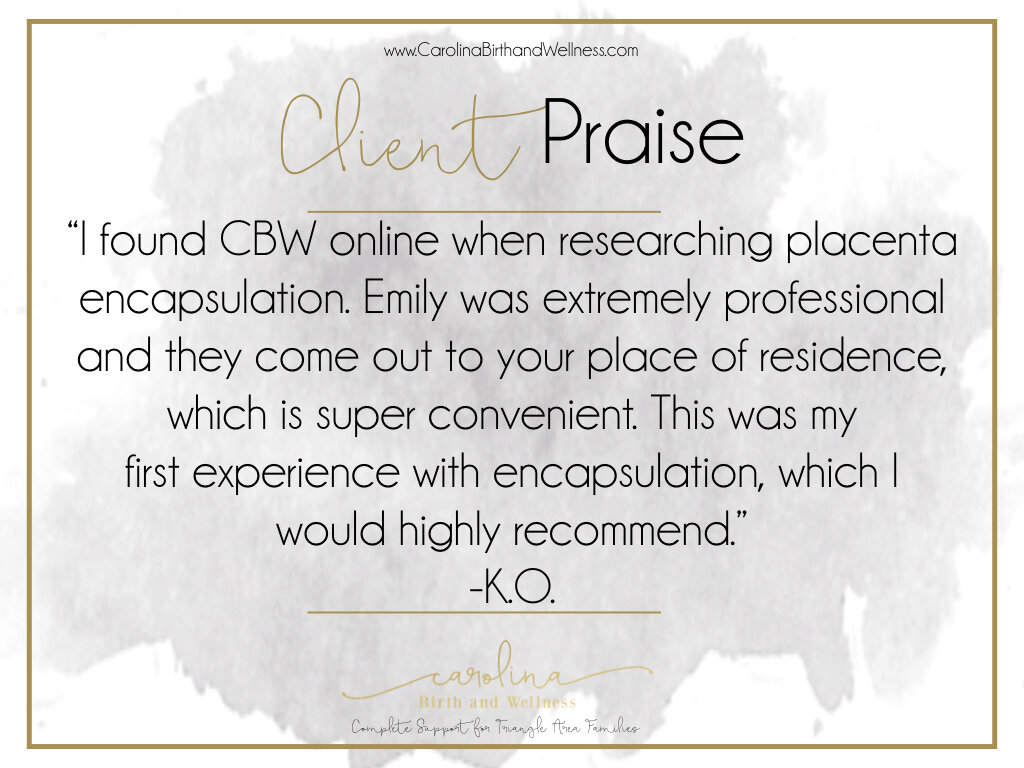Safe Placenta Encapsulation
The CDC recently published an article outlining the horrible case of Oregon women who's newborn baby was infected with group B Streptococcus agalactiae (GBS) bacteremia. This case is every parents fear, and we at Carolina Birth and Wellness hope this warning from CDC causes those who encapsulate and process placenta to reevaluate how to safely transport, process, and sanitize their equipment to ensure this is a one time event.
What we know from the CDC article:
- The mother was tested for GBS at 37 weeks and the resulting test was negative
- The mother contracted with Company A to have her placenta encapsulated
- According to Company A’s website, the placenta is cleaned, sliced, and dehydrated at 115°F–160°F (46°C–71°C), then ground and placed into about 115–200 gelatin capsules, and stored at room temperature.
- Shortly after birth, the newborn developed signs of respiratory distress and was given antibiotics were initiated for presumed sepsis
- Three days post birth, the mother received her placenta capsules from Company A and began taking two capsules three times daily
- The newborn was diagnosed with late onset GBS after another hospitalization
The placenta capsules using the raw method tested positive for GBS
Company A claims that the placenta was dehydrated at 115°F–160°F, and we know that that temperature range is not sufficient to kill all blood borne pathogens. At Carolina Birth and Wellness, our placenta specialists are trained in blood borne pathogens and food safety preparation to ensure they not only know how to properly process a placenta, but also how to conform to the industry standards when dealing food safety and use universal precautions when dealing with possible blood borne pathogens.
We will no longer offer the RAW method of preparation for placenta encapsulation.
Due to the fact the Raw method of preparation did not kill the GBS present in the placenta, effectively immediately, we will only process placentas using the Traditional Chinese Medicine Inspired method of preparation. We will continue to maintain the highest safety standards for how we transport, prepare, process, and sanitize our equipment while encapsulating a placenta.
Transportation: each client is given explicit directions for how to store and transport their placenta from the birthing location to the home. In our transport kit, we provide gloves, a towel, and bleach wipes to provide the most sanitary way to transport an organ.
Preparation: we will no longer offer the raw method of preparation. By steaming the placenta, the internal temperature is high enough to kill bacteria and other diseases that may be present. Furthermore, we use universal precautions to prevent cross contamination.
Sanitization: the only time the placenta will be exposed to any surface will be while the client (or adult of the clients choosing) is present. No placenta processing we do is done outside of the client’s home to ensure the placenta is not exposed to any foreign bacteria. Between each client, all of our equipment is scrubbed clean with hot, soapy water and then soaked in a bleach bath, to allow everything to be fully sanitized before and after each client.
We hope this has been informative to both potential clients and current encapsulators. If you have questions, please do not hesitate to contact us.


